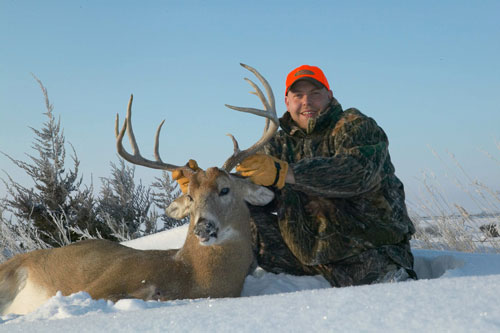 • Monitor the weather and all the elements that will impact the next hunting day. Critical elements are temperature and humidity (dew point), wind, rapidly changing barometric pressures and precipitation.
• Monitor the weather and all the elements that will impact the next hunting day. Critical elements are temperature and humidity (dew point), wind, rapidly changing barometric pressures and precipitation.
• Learn how deer in your area react to different types of winter weather, and where they go to feed or bed down, then plan accordingly.
• When scouting or hunting, investigate deer-harboring areas back in deep cover. Be sure to double-check for fresh travel routes to current food supplies and the trails back to bedding areas, or funnel crossroads between varying habitats.
• With the reduction in daylight hours during winter, deer will move more during the late afternoon hours up until dark. They will move very early at dawn as well. If the day warms up or turns sunny during the period from 10 a.m. to 2 p.m., hunt then in open feeding areas, along water courses, or any other place where does might gather in groups.
• Deer will move in light-drizzle rains, but rarely in downpours or when there are high winds.
• When heavy snow or ice covers ground food sources, deer must forage even more. Search out and hunt areas where there is plenty of exposed woody browse.
• Always glass corn or soybean fields thoroughly to see if deer are gleaning crop leftovers. Wildlife food plots shine this time of the season, even if frost-burned. Southern hunters should hit these hard.






